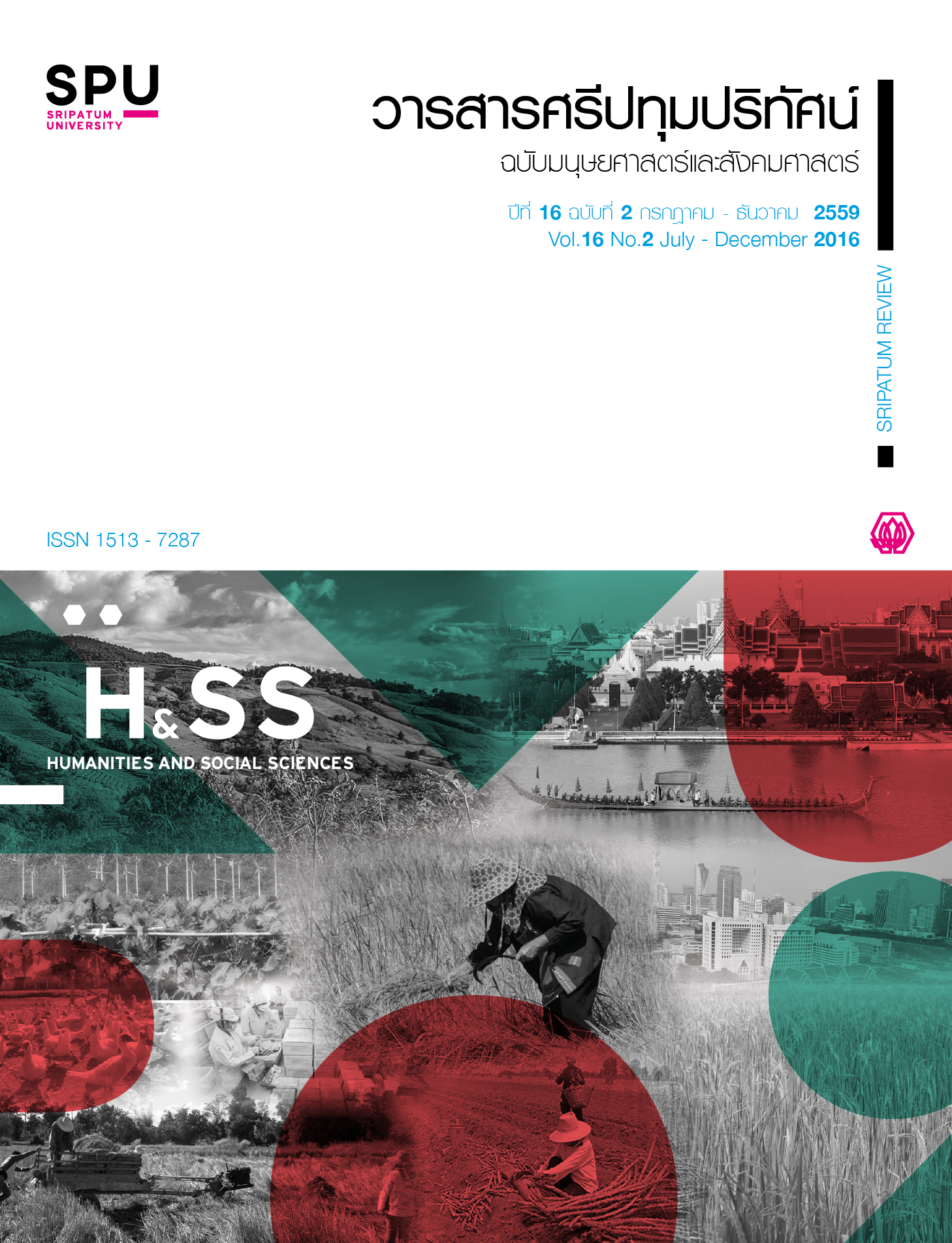DEVELOPMENT OF INDICATORS FOR VIOLENCE AGAINST WOMEN ON TELEVISION PROGRAM
Main Article Content
Abstract
The purpose of this research was to develop the indicators for violence against women on television program. This research employed the sequential mixed-method. In the qualitative study, the researcher conducted in-depth interviews of psychologists, academics on mass media of communication, professionals on mass media of communication, personnel from women organizations on anti-violence against women, and personnel from work agencies concerned with participation with and monitoring of the mass media. In the quantitative study, a questionnaire was employed for collecting data from 431 women across the country, and a television program analysis form was employed to analyze five television programs that showed violence against women. Qualitative data were analyzed with description and interpretation; while quantitative data were analyzed with factor analysis and correlation coefficient. The results showed that Indicators for violence against women on television program or the SLEV MODEL comprised 4 aspects: (1) the indicator in the aspect of sex (S) which consisted of 9 sub-indicators, (2) the indicator in the aspect of language (L) which consisted of 9 sub-indicators, (3) the indicator in the aspect of emotion (E) which consisted of 11 sub-indicators, and (4) the indicator in the aspect of behavioral violence (V) which consisted of 10 sub-indicators.
Article Details
1. กองบรรณาธิการสงวนสิทธิ์ในการพิจารณาและตัดสินการตีพิมพ์บทความในวารสาร
2. บทความทุกเรื่องจะได้รับการตรวจสอบทางวิชาการโดยผู้ทรงคุณวุฒิ แต่ข้อความและเนื้อหาในบทความที่ตีพิมพ์เป็นความรับผิดชอบของผู้เขียนแต่เพียงผู้เดียว มิใช่ความคิดเห็นและความรับผิดชอบของมหาวิทยาลัยศรีปทุม
3. การคัดลอกอ้างอิงต้องดำเนินการตามการปฏิบัติในหมู่นักวิชาการโดยทั่วไป และสอดคล้องกับกฎหมายที่เกี่ยวข้อง
References
โครงการศึกษาและเฝ้าระวังสื่อเพื่อสุขภาวะของสังคม. 2550. รายงานผลการศึกษารอบที่ 14 เรตติ้งรายการโทรทัศน์ จุดเด่นและข้อจำกัด ในฟรีทีวี 3,5,7,9,11 และ TITV ระหว่าง 1-7 ตุลาคม 2550.ม.ป.ท.: สำนักงานกองทุนสนับสนุนการสร้างเสริมสุขภาพ(สสส.).
จิตติมา ภาณุเตชะ และคณะ. 2548. การฉายภาพความรุนแรงต่อผู้หญิง : วิเคราะห์มุมมองสื่อไทย. ม.ป.ท.: มูลนิธิสร้างความเข้าใจเรื่องสุขภาพผู้หญิง.
วัชรินทร์ จามจุรี. 2550. “ศึกษาความสัมพันธ์ภายในและปัจจัยภายนอกที่ส่งผลต่อพฤติกรรมก้าวร้าวของเด็กชั้นประถมศึกษาปีที่ 6 โรงเรียนสาธิตมหาวิทยาลัยศรีนครินทรวิโรฒ ประสานมิตร (ฝ่ายประถม)”. วิทยานิพนธ์ ปริญญามหาบัณฑิต สาขาวิชาการวิจัยพฤติกรรมศาสตร์ประยุกต์ บัณฑิตวิทยาลัย มหาวิทยาลัยศรีนครินทรวิโรฒประสานมิตร.
ศศิณี ยาวิชัย. 2554. “การวิเคราะห์เนื้อหาความรุนแรงต่อสตรีที่ปรากฏในละครโทรทัศน์ไทย”. วิทยานิพนธ์ปริญญาโท ศิลปศาสตรมหาบัณฑิต สาขาวิชาการสื่อสารศึกษา บัณฑิตวิทยาลัย มหาวิทยาลัยเชียงใหม่.
เอกลักษณ์ วงศ์อภัย.16 กันยายน 2556.นักจิตวิทยาชำนาญการ โรงพยาบาลศรีธัญญา. สัมภาษณ์.
Anderson, Craig A., Carnagey, Nicholas L. and Eubanks, Janie. 2003. “Exposure to Violent Media: The Effects of Songs With Violent Lyrics on Aggressive Thoughts and Feelings”. Journal of Personality and Social Psychology”, 84 (2003): 960-971.
Carnagey, Nicholas L., Anderson, Craig A. and Bartholow, Bruce D.. 2007. “Media Violence and Social Neuroscience : New Questions and New Opportunities”. Association for Psychological Science,16 (2007): 178-182.
Carnagey, Nicholas L., Anderson, Craig A. and Bushman, Brad J.. 2006.“The effect of video game violence on physiological desensitization to real-life violence”. Journal of Experimental Social Psychology, 43. (2007): 489-496.


